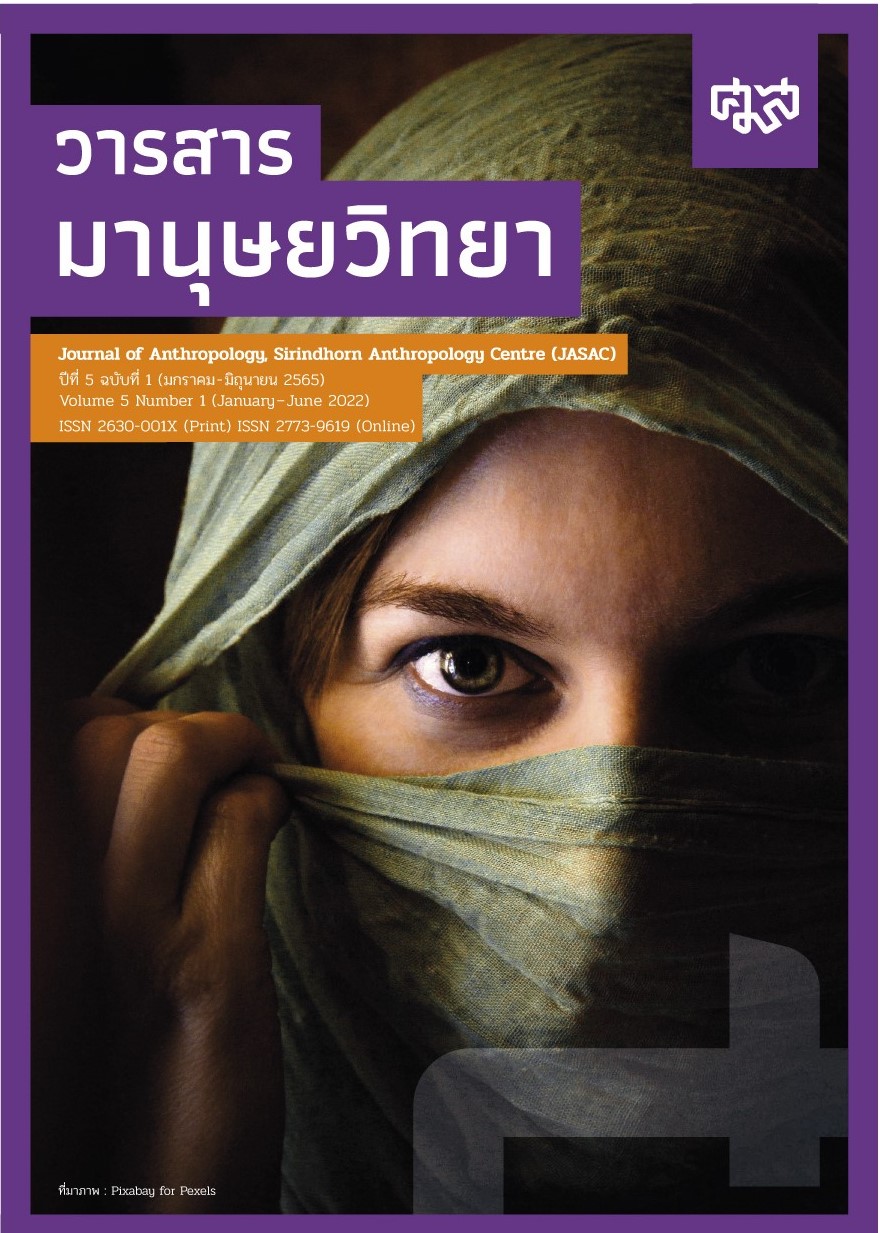มรดกอาณานิคมในการจัดแสดงวัตถุทางชาติพันธุ์ และการรื้อถอนอำนาจอาณานิคม กรณีศึกษาจากประเทศอินโดนีเซีย
Main Article Content
บทคัดย่อ
บทความชิ้นนี้ให้ความสนใจประเด็นมรดกอาณานิคมของดัตช์ในการจัดแสดงภาพแทนทางวัฒนธรรมของอินโดนีเซีย ภาพแทนความจริงของอินโดนีเซียถูกสร้างขึ้นผ่านชุดสะสมทางชาติพันธุ์ และการจัดแสดงในพิพิธภัณฑ์ในช่วงการปกครองโดยเจ้าอาณานิคมดัตช์ หลังจากนั้นภาพแทนทางวัฒนธรรม และชุดสะสมทางชาติพันธุ์ ยังถูกส่งต่อมาสู่ช่วงหลังอาณานิคม บทความชิ้นนี้เสนอว่าภาพแทนทางวัฒนธรรมในฐานะมรดกของอาณานิคมถูกผลิตซ้ำโดยรัฐบาลของอินโดนีเซียเพื่อวาระซ่อนเร้นทางการเมือง และเศรษฐกิจ อย่างไรก็ตามปฏิบัติการเพื่อรื้อถอนอำนาจอาณานิคมนี้ปรากฏอยู่ในพื้นที่สาธารณะโดยชุมชนท้องถิ่น ในพิพิธภัณฑ์บางในแห่งเนเธอร์แลนด์ บทความนี้ใช้การทบทวนเอกสารเป็นวิธีวิทยาหลักของบทความคำสำคัญ: อินโดนีเซีย มรดกอาณานิคม วัตถุสะสมทางชาติพันธุ์ การรื้อถอนอำนาจอาณานิคม
Article Details

อนุญาตภายใต้เงื่อนไข Creative Commons Attribution-NonCommercial-NoDerivatives 4.0 International License.
ลิขสิทธิ์@ของวารสารมานุษยวิทยา
ศูนย์มานุษยวิทยาสิรินธร (องค์การมหาชน), กรุงเทพฯ, ประเทศไทย
ข้อมูลเพิ่มเติม:
https://creativecommons.org/licenses/by-nc-nd/4.0/
เอกสารอ้างอิง
ทวีศักดิ์ เผือกสม. 2547. อินโดนีเซีย รายา: รัฐจารีต สู่ “ชาติ” ในจินตนาการ.
กรุงเทพฯ: เมืองโบราณ.
Ames, Michael M. 1992. Cannibal Tours and Glass Boxes: The Anthropology of Museums. Toronto: UBC Press.
Bakker, Laurens. 2004. “At Nias or from Nias?: Museum Displays, National Images and Local Reality in a West Indonesian Island.” In Fiona Kerlogue (Ed.), Performing Objects: Museums, Material Culture and Performance in Southeast Asia, (pp. 47-65). London: Horniman Museum.
Bennett, Tony. 1994. The Birth of the Museum: History, Theory, Politics. London: Routledge. Diaz-Andreu, Margarita. 2007. A World History of Nineteenth-Century Archaeology: Nationalism, Colonialism, and the Past. Oxford: Oxford University Press.
Errington, Shelly. 1998. The Death of Authentic Primitive Art and Other Tales of Progress. Berkeley: University of California Press.
Furnivall, J.S. 1941. Progress and Welfare in Southeast Asia: A Comparison of Colonial Policy and Practice. New York: Institute of Pacific Relations.
Gouda, Frances. 1995. Dutch Culture Overseas: Colonial Practice in the Netherlands Indies 1900-1942. Amsterdam: Amsterdam University Press.
Hitchcock, Michael. 1997. “Indonesia in Miniature.” In Michael Hitchcock and Victor T. King (eds.), Images of Malay-Indonesian Identity, (pp. 227-35). Oxford: Oxford University Press.
Hoop, Van der, A.N.J. TH. a Th. 1948. Short Guide to the Museum. Jakarta: Royal Batavia Society of Arts and Sciences.
MacKenzie, John M. 2009. Museum and Empire: Natural History, Human Cultures and Colonial Identities. Manchester: Manchester University Press.
McGregor, Katharine E. 2004. “Museums and the Transformation from Colonial to Post-Colonial Institutions in Indonesia.” In Performing Objects: Museums, Material Culture and Performance in Southeast
Asia, edited by Fiona Kerlogue, 15-29. Contributions in Critical Museology and Material Culture. London: Horniman Museum.
Neill, Stephen. 1966. Colonialism and Christian Missions. London: Lutterworth Press.
Pemberton, John. 1994. “Recollections from ‘Beautiful Indonesia’ (Somewhere Beyond the Postmodern).” Public Culture 6: 241–62.
Sapardan, Wieske. 2021. “The Return of Cultural Property and National
Identity in Postcolonial Indonesia.” In Louise Tythacott and Panggah Ardiyansyah (eds), Returning Southeast Asia’s Past: Objects, Museums and Restitution, pp. 213-34. Singapore: NUS Press.
Sauvage, Alexandra. 2010. “To Be or Not to Be Colonial: Museums Facing Their Exhibitions.” Culturales VI (12): 97–116.
Van Beurden, Jos. 2021. “Returns by the Netherlands to Indonesia in the 2010s and the 1970s.” In Louise Tythacott and Panggah Ardiyansyah (eds.), Returning Southeast Asia’s Past: Objects, Museums and Restitution, (pp. 187-208). Singapore: NUS Press.
Wright, Gwendolyn. 1996. The Formation of National Collections of Art and Archaeology. Washington, D.C.: National Gallery of Art.


